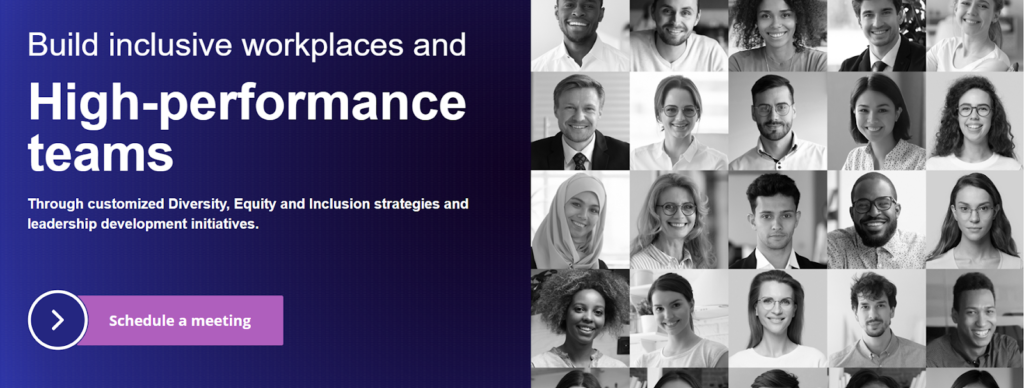
Maximising Diversity, Equity, and Inclusion in 2023: A Handbook
The world saw a convergence of three major trends when the decade started:
- The accelerated use of 4th Industrial Revolution Technologies
- Job market disruptions
- A call for greater diversity, equity, and inclusion in the workplace.
Clearly, in the midst of the sweeping change, organisations have an opportunity to embed policies that enhance diversity, equity, and inclusion in the workplace. However, despite the renewed focus on DEI, even today, there is a noticeable lack of clarity around DEI.
In fact, many organisations use the phrases interchangeably, and it becomes a reason for pitfall in one of many ways. But if you understand the business case of DEI, you will want to know how diversity, equity, and inclusion play an essential role in maximising employee performance and organisational success.
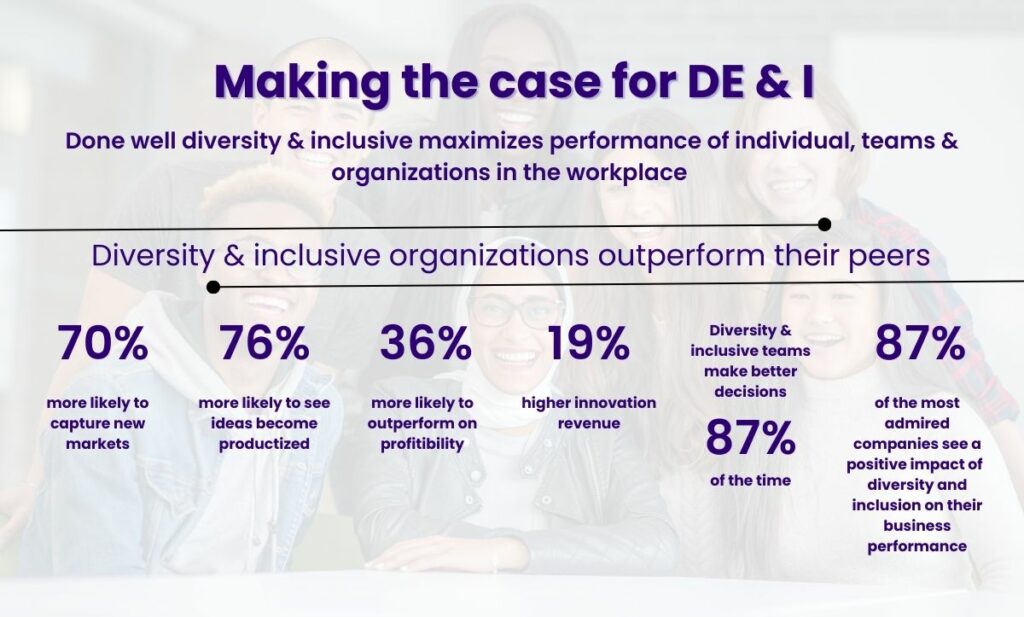
So, what is diversity? What do equity and inclusion really mean? Are they similar, or is there any difference between each term? Before we head towards breaking down each term and what they actually mean, here’s the graphical representation of DEI from Gensler.
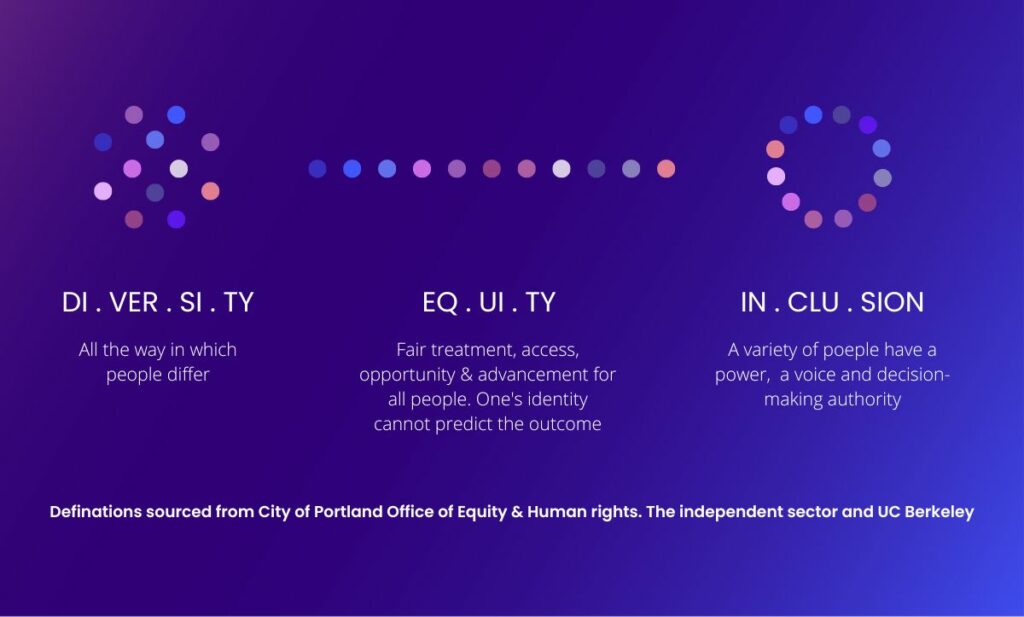
Section 1: Understanding the concept of diversity, equity, and inclusion
In the face of increasing stakeholder expectations and the business case for DEI is undeniable, many organisations are now shifting to advance their DEI efforts. A recent survey showed that more than 80% of organisations had accelerated their DEI efforts over the past five years.
However, embarking upon a DEI journey is daunting, with many companies struggling to achieve results or advance their efforts to the next level. So, before you reflect on what’s missing, let’s break down DEI and understand the definition once and for all.
Diversity
Many people tend to refer to people or a person as “diverse.” Although there are positive intentions behind such acknowledgements, it creates a lot of euphemisms for “outside a majority.” However, it is misleading because we assume everyone is the same. And the consequences are that it starts alienating people rather than including them.
It’s an issue we’ve seen echoed amongst many job seekers, talent acquisition specialists, and HR professionals. This is why a blanket treatment won’t work.
This is why you must understand what diversity means in its true sense. For instance, millennials perceive diversity as the combination of different backgrounds, while older generations view diversity as equal and fair representation.
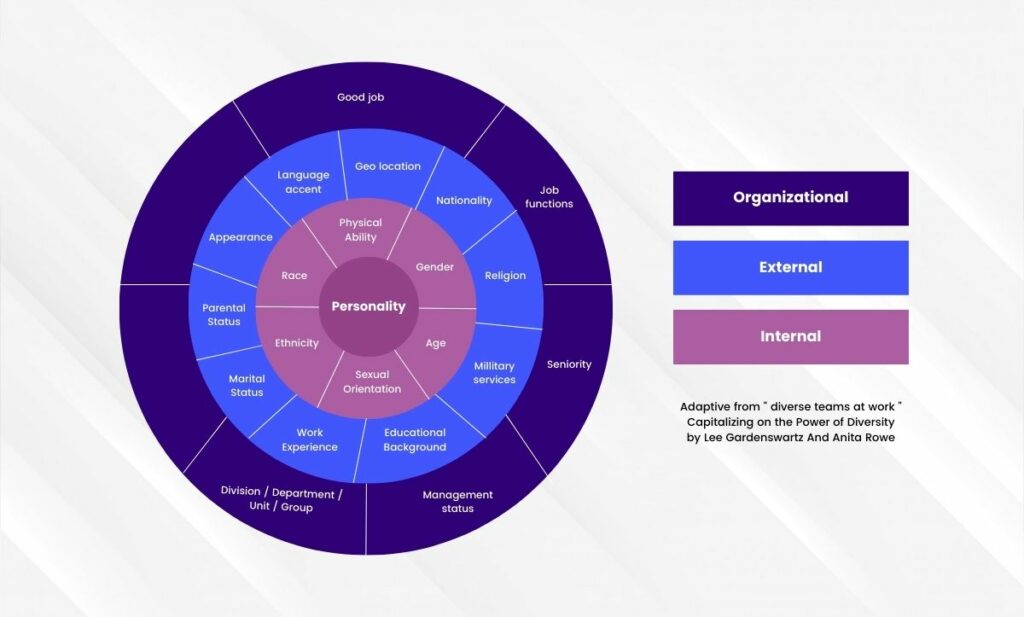
But ideally, diversity is less about what makes people different and more about understanding, accepting, and valuing the differences that make us different.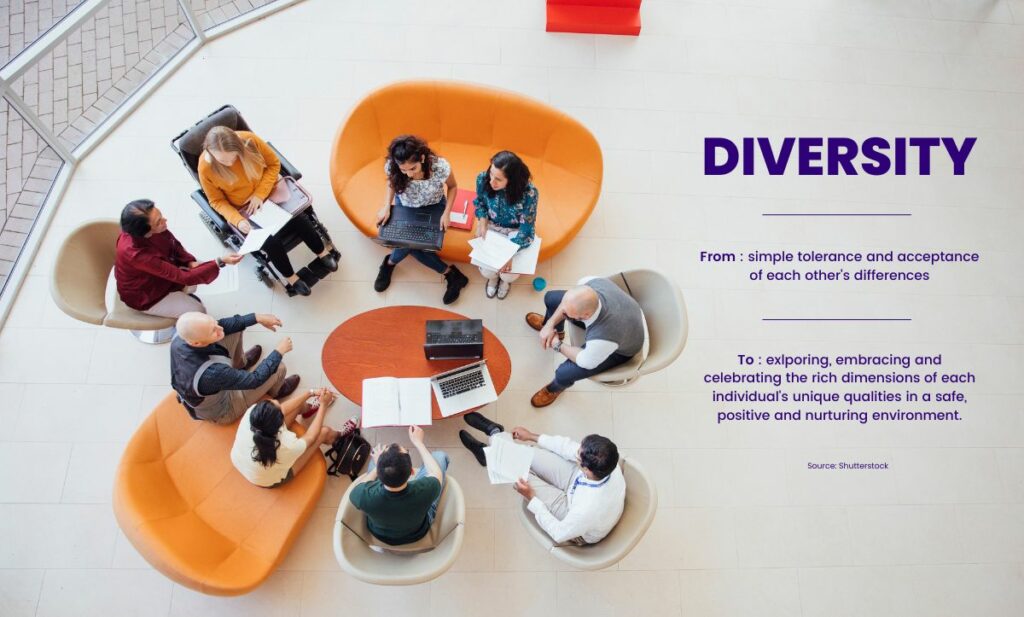
Equity
While diversity is about all the ways people differ, equity is about providing fair access to opportunities and advancing diverse people. It’s more about creating a fair playing field.
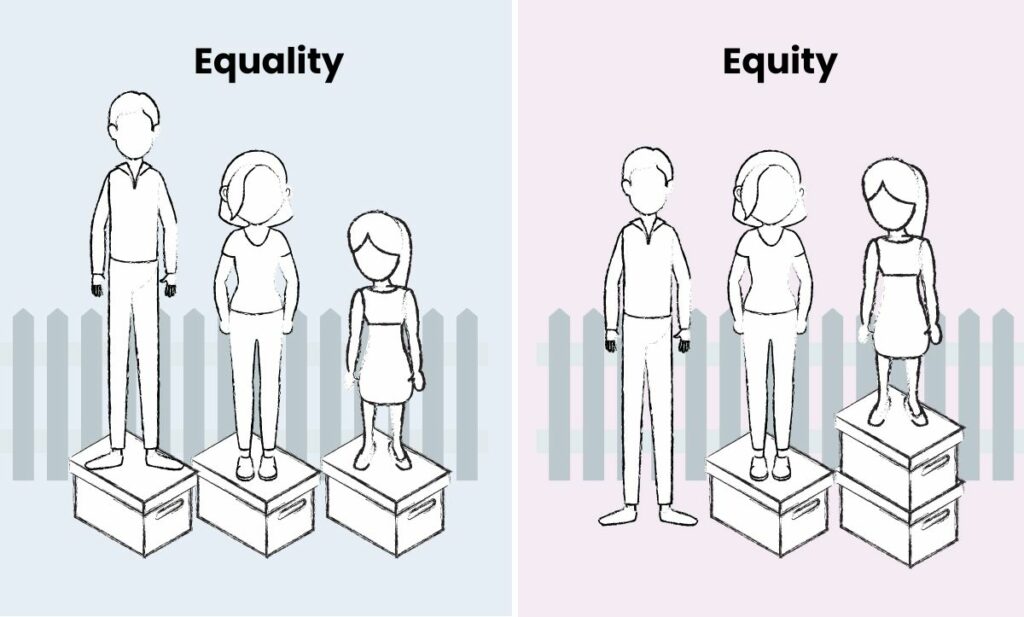 To help you understand better, let’s take the example of transportation. Not everyone in your organisation will have a car or can afford public transportation for daily commutes. As an organisation, you can create an equitable environment by accommodating the full spectrum of transportation needs. It could be a part of your policies around start times, working hours, and stipend.
To help you understand better, let’s take the example of transportation. Not everyone in your organisation will have a car or can afford public transportation for daily commutes. As an organisation, you can create an equitable environment by accommodating the full spectrum of transportation needs. It could be a part of your policies around start times, working hours, and stipend.
But equity is more than just providing reasonable accommodations. It’s about building fairness into the fabric of the organisation. That means designing a framework that supports talent screening, hiring, and workplace culture. 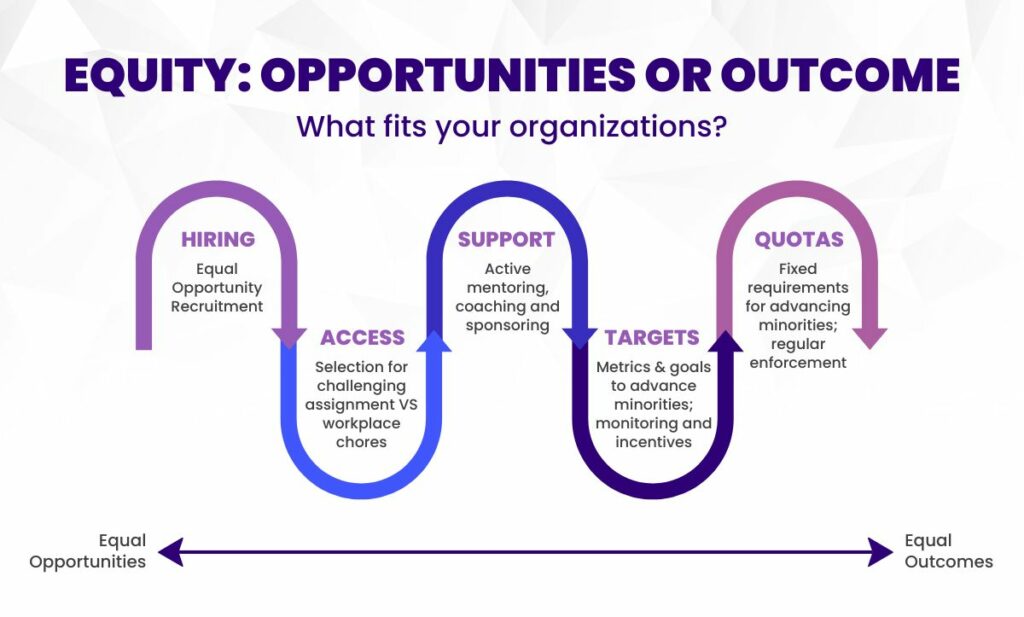 Source
Source
But leaders need to understand that the equitable measures will change or evolve depending on your company’s unique characteristics. This is why clarity and alignment are essential to building equity that fits your organisation.
Inclusion
Many organisations feel that inclusion will automatically fall into place if they work on diversity and equity. Of course, you are building equitable practices and leading a diverse team, but it won’t work if your people don’t feel included.
Inclusion is about belonging and how much your employees feel valued. Even if you have well-presented teams, it doesn’t always mean they will feel included.
For example, women might be a part of your managerial and leadership positions, but if you follow long-standing gender norms and gender biases, they will never feel included.
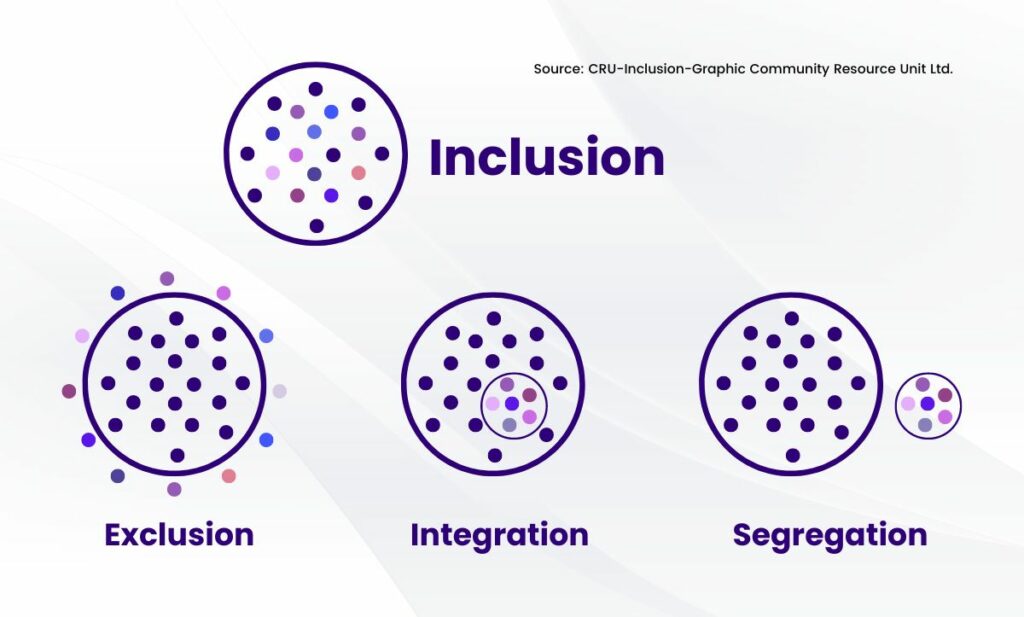 Source: CRU-Inclusion-Graphic Community Resource Unit Ltd.
Source: CRU-Inclusion-Graphic Community Resource Unit Ltd.
For instance, more than 45% of employees believe that “respect” is important in creating an inclusive culture, according to the Quantum Workplace Report. Again, it’s only part of creating inclusion. You need to understand your employees’ points of view to help them feel connected. You need to ask a few questions to know whether you run an inclusive workplace:
- Do they feel a sense of community?
- Do they think they contribute daily?
- Do they feel a shared sense of purpose with their colleagues?
Once you are clear about the definitions of DEI, the next section will discuss the next steps. Knowing isn’t enough. Action is what will help you proceed in 2023.
Section 2: Winning through inclusion and diversity: Taking bold action
“Diversity is a fact; Equity is a choice; inclusion is an action. Belonging is an outcome.” – Arthur Chan.
Diversity and inclusion are two pillars of organisations. While the talk around it feels like a buzzword, only a few organisations are actually translating words into actions and making sense. We believe that no organisation would include any strategy unless they understand the wins as a consequence.
Let’s begin with what the research suggests. It shows that having a diverse and inclusive workplace would result in the following:
- Higher revenue growth
- Improved innovation
- Better talent attraction
- Higher employee retention.
DEI might seem a complicated subject, but if you look at this simpler definition, you will know that you are already taking steps to infuse it within your business strategy.
When your employees feel their ideas, contributions, and presence is taken seriously by your organisation, you are a DEI-integrated organisation.
On the other hand, when your employees trust their coworkers and company policies, they are:
- 9.8 times more likely to feel happy when coming to work.
- 6.3 times more likely to feel pride in what they do.
- 5.4 times more likely to stay in a company for a longer time.
Also Read: Top Lessons to Learn from the leaders in Diversity and Inclusion
You have an idea about the impact of diversity and inclusion. But are you ready to take bold action? Here’s what you must do!
- Bold leadership is the way to go:
No matter what anyone says, leadership must embrace that DEI isn’t just a tick-in-the-box but a part of workplace culture. When your leaders start prioritising DEI as a strategic decision, it will show in everyday culture.
For example, only 36% of employees, compared to 68% of leaders, believed that the company had created an empowering culture where employees could be themselves without fear. This is why leadership should establish policies, and everyday processes based on data, track progress, and be accountable when it fails.
2. Go beyond numbers
While a data-driven approach is a must, you must fully understand your culture and drivers for DEI in your organisation. This is only possible when you engage in meaningful conversations with your employees. The more you include your employees, the more you will have first-hand knowledge of the gaps.
You can use face-to-face meetings, focus groups, and employee surveys to understand your employees’ wants.
For instance, Accenture in the Netherlands found that hosting an unconscious bias workshop led to open dialogues and new insights. That’s how smaller steps can help you drive DEI strategies in their true sense.
3. Create a thriving culture
You are highly mistaken if you think DEI can only be introduced from the top. While creating strategies can hit the ground running, you need to connect with like-minded people and drive DEI at every level. Obviously, some will be leaders. Others can help take the step forward, which you can use to create opportunities for future l&d leaders. For this to happen, you need to provide more than just maternity leave or paid vacations.
It’s time to take bold actions like the companies we will mention in the next section.
Create a Competitive Advantage through a PIONEERING DIVERSITY, EQUITY & INCLUSION STRATEGY
Section 3: Examples of diversity, equity, and inclusion in successful companies
Every organisation is inclined towards building a diverse team that feels included and valued. But not everyone can achieve the goal or ensure a positive impact. But here are some companies who point out that if you do it right, amazing results will follow.
- Microsoft
In 2016 when no one was even talking about diversity and leadership, they made a bold move by making diversity one of their strategic performance goals to determine annual incentives.
They factor how well employees meet this standard into their performance conversations. With around 22% more female employees globally in 2016, they saw the progress that redefined the diversity benchmark. In fact, they saw a 56% rise in women executives, leading to a cultural transformation. They showed that actions don’t always have to be dramatic. You just need to show that you are committed to your DEI and L&D goals and can achieve real progress.
2. Accenture
When you talk about Accenture, you will feel proud since they are consistently among the best employers for DEI worldwide. But do you know what makes them a part of that ranking? It’s partly because of their well-supported ERGs. For instance, their ERGs, Pride and Disability Champions, provide support to more than 140,000 people who are part of the marginalised groups.
These groups allow their employees to share experiences, receive coaching and advocate change. And since more than 40% of executives are women, the experience is even more worthwhile.
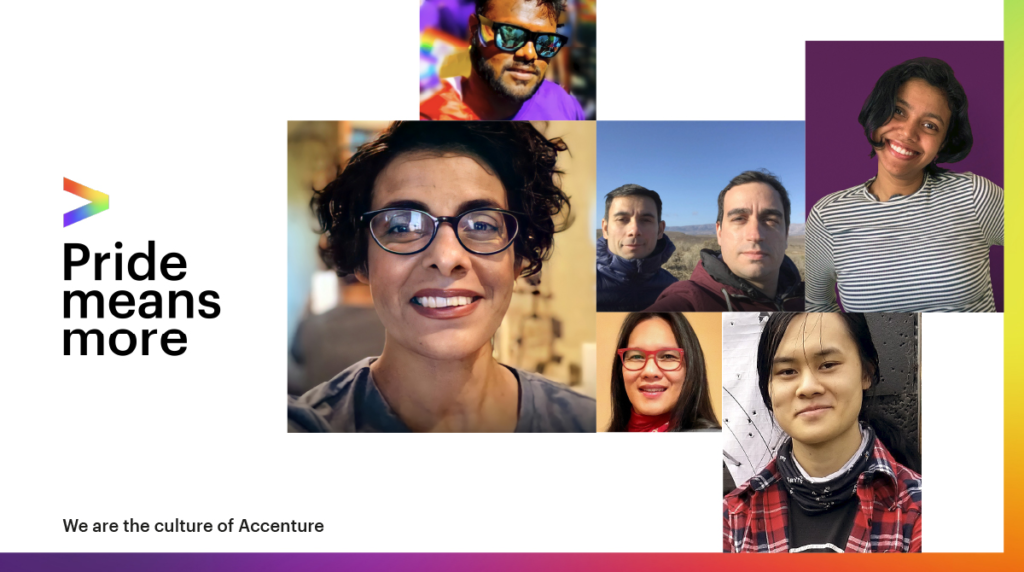
3. ViacomCBS
Gender disparity is still an issue. And it is quite a significant challenge at the top. With only 23% of board seats being women, one can expect a rise in gender parity by 2040. However, companies like Viacom CBS are ahead of the curve. They have majority-female boards. In their company, women hold 58% of the board and 48% of positions at the VP level globally. They achieved this by investing years in their Female Talent Program to help women step into leadership roles. Their robust DEI strategies have helped create a supportive and encouraging environment.
Also read: Find out the missing piece of puzzle of why “DEI” is failing in organisations
4. Proctor and Gamble
People with disabilities face many challenges if the organisational culture isn’t worthy enough. Many organisations don’t give thought to accessibility, which becomes quite an issue since PWD feel excluded at work. However, P&G understood this and worked towards a mission to make their company the most accessible in the world. They are working towards achieving this goal by:
- Creating a position of Accessibility leader
- Supporting ERGs and offering internal support
- Launching disabilities challenge allows them to get employee ideas for more accessible products.
This is the best example of how action-oriented DEI initiatives can create an influential employer brand.
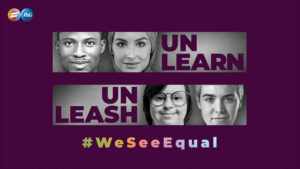
5. KPMG
Leadership training is a big part of DEI training. However, not everyone understands how to be more inclusive. The reason is the lack of shared experience. In this case, reverse mentoring helps bridge the gap. KPMG understood this and has been running a reverse mentoring scheme since 2018. In this they:
- Pair the senior leaders with junior employees from different gender, race, and sexuality.
- Help leaders understand how to be more inclusive.
- Help juniors feel more empowered and engaged.
6. Asana
They often want to be early adopters of the change they wish to see in the workplace. They strive to create an empowering and welcoming culture. And they are doing it by creating a culture of DEI across 3 key areas:
- Thriving Now
- Recruiting for the Future
- Building on the Past
And with their long-established ERGs, their employees often feel incredibly lucky to work at such a company. Their people-first approach makes their company more extraordinary.
Companies like these help nurture a culture that powers employees to grow, innovate, and achieve good goals for themselves and their businesses.
Section 4: The financial benefits of prioritising diversity, equity, and inclusion
While you can’t always see the direct impact of DEI on your ROI, using effective measures always results in actions that directly impact the revenue and finances. Here’s how you can benefit from prioritising DEI in your organisation.
- Top-notch employee experience
Organisations with effective DEI programs and initiatives improve the overall employee experience. Not only that, they feel more valued, and belonging ratio increases, which:
- Results in a 56% increase in job performance
- Leads to a 75% reduction in sick days
- Results in a 50% drop in turnover risk
If these numbers mean nothing, here’s some data that will push you to build DEI initiatives right away. As per Inc., companies lose around $500 billion annually because of disengaged employees. To make matters worse, coming in sick or sick days costs around $150 billion in lost productivity. And you understand that turning over one employee alone can cost anything between $3500 to $25000.
Can you afford to miss so much revenue when the competition is soaring and the digital marketplaces are evolving rapidly?
- Talent attraction
If you see DEI as an impact aspect of your branding strategy, you can find the right people for the role. In fact, as per Gallup, more than 60% of employees are looking for diverse and inclusive companies when considering a job. Around 37% of candidates confirmed that they would avoid applying for a company that was rated negatively by their employees.
- Innovation
Companies with gender-diverse teams outperform their competitors in innovation. This often results in an increase in profitability by 36%. Not only that, companies with above-average leadership diversity bring revenue from new products and other forms of innovation at a rate of 19% higher than the ones who don’t. More than that, companies that follow DEI are 70% more likely to capture new markets.
In short, you have everything to gain by investing in premier DEI initiatives. To conclude, if you enforce DEI policies as a part of your everyday initiatives, you will get 2.3 times more cash flow per employee.
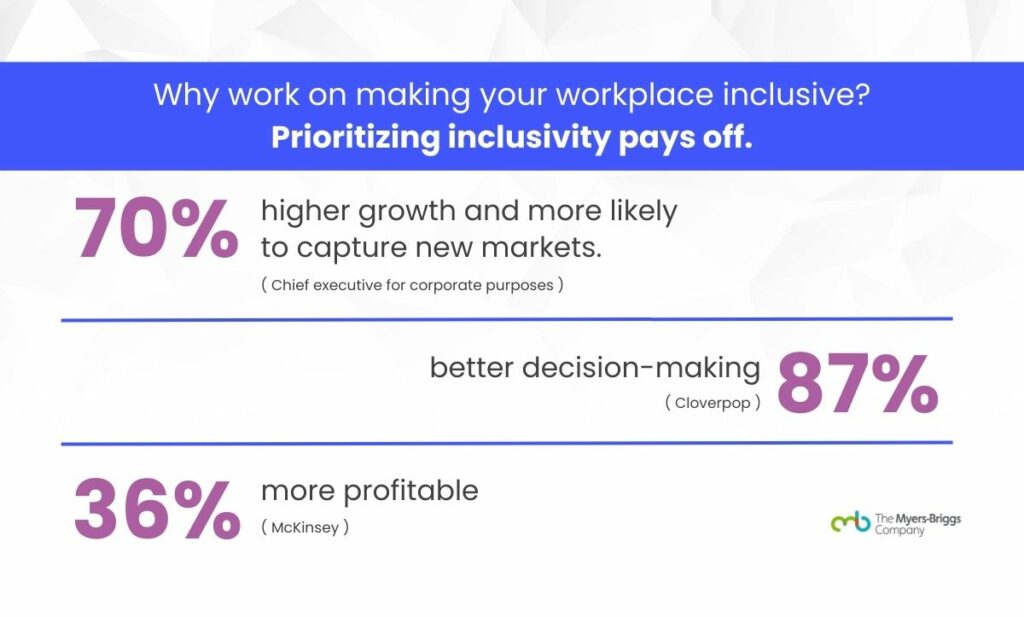
Section 5: Steps towards improving Diversity, equity, and inclusion within an organisation
The benefits of DEI are evident now. However, that doesn’t change the fact that figuring out what to do and how to succeed is still challenging for many organisations. That’s why we are starting a conversation around improving DEI within an organisation.
First of all, it’s time to get R.E.A.L, which implies that you need to Reveal opportunities, Elevate Equity, Activate Diversity, and Lead with inclusion.
This means that before you set an agenda or duplicate initiatives that you feel might be effective, gain awareness about the types of Diversity, equity, and inclusion and how it will play out for individuals, teams, and organisations as a whole. The R.E.A.L framework will help you shift your priorities and introduce new ways of empowering your teams. The result will be simple:
- Improve ability to identify and mitigate bias
- Respect differences
- Support teams to build empathetic relationships
- Foster allyship
- Bring out the best in others
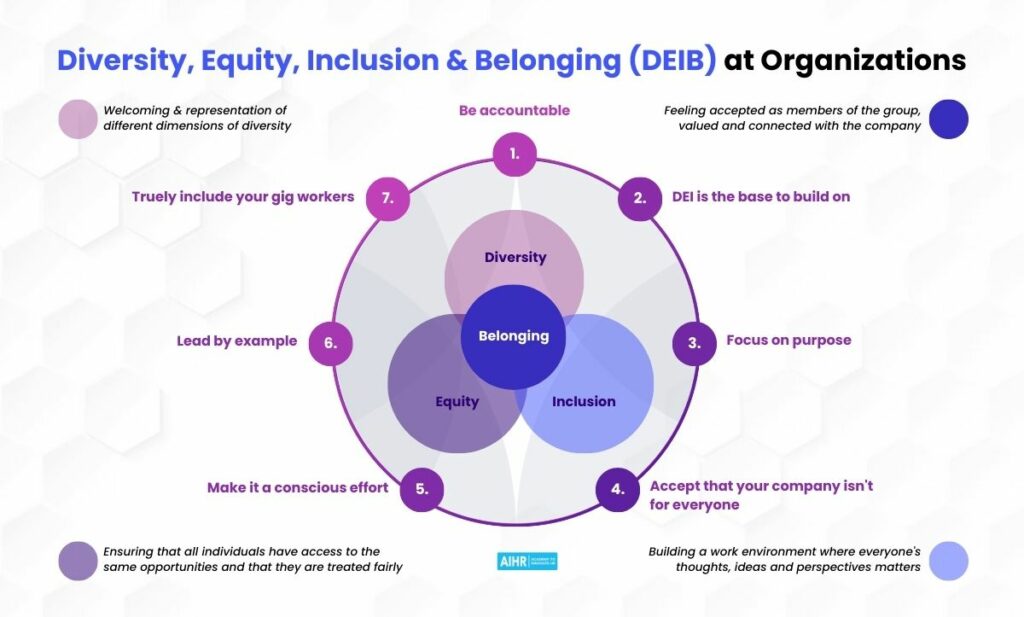
Now that you are clear about the first step let’s move to the “how” of improving DEI in your organisation.
Start with effective conversations
To build a better culture with due importance to DEI, you must begin by changing the conversations. Diversity divides happen when there are better conversations. This is why improving everyday conversations free from biases is a must to increase openness and understanding. This will fuel better collaboration, innovation, and effectiveness.
Conduct network analysis
Network analysis is one powerful tool to understand if there are any inequities within an organisation. It will help prevent issues that result in ignoring inclusive practices within an organisation. You will find connections, expertise, or perspectives that need to be utilised more. Leaders can use a DEI/EDI perspective to figure out any unintentional bias and set goals to diversify networks. This will help you engage your employees and build positive connections across organisational silos.
But make sure you move beyond the awareness stage. The action-oriented approach is a must to address conscious and unconscious bias and create a psychologically safe workplace. That’s the only way to leverage the full potential of your employees.
Analyse current practices
You can only create a difference if you have analysed current norms and policies. You need to review recruitment, hiring, and promotion practices to drive a system-wide change. Along with that, auditing compensation data is a must. For that, you need to ask tough questions to yourself:
- Who gets access to on-the-job training and key assignments?
- Who is tapped for training and leadership experiences?
- Who is getting access to learning and development opportunities?
- Are there any assumptions in place for individuals and their capabilities?
- Are you applying different standards for some people or groups?
It’s time that organisations also help managers and teams evaluate their practices and policies so that they can work on all potential areas.
Counter bias through coaching and mentoring
Many employees, leaders, and organisations often don’t know that they are unconsciously promoting an inequitable culture that is far from being inclusive or diverse. This is why you find a decrease in the progression. Even career progress stalls after a time. This is why learning and development are essential aspects of every DEI training.
It’s time that organisations partner with DEI vendors and provide guidance, support, and feedback so that everyone can succeed without any known or unknown disparities in the workplace.
Ready to take the next step?
We can partner with your organisation and help you shift your focus on DEI and training initiatives to make processes more equitable, diverse, and inclusive.



